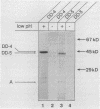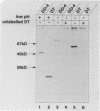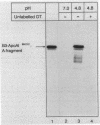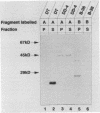Abstract
For diphtheria toxin to be cytotoxic, the enzymatically active part (fragment A) must be translocated to the cytosol. We here demonstrate that additional proteins linked as N-terminal extensions can be translocated along with fragment A across the plasma membrane of toxin-sensitive cells. Thus, an extra fragment A of diphtheria toxin and some of apolipoprotein AI were translocated as passenger proteins along with mutant diphtheria toxin fragment A. Translocation was monitored by the cytotoxic effect of the additional fragment A as well as by the translocation of [35S]methionine-labelled protein to a compartment protected from externally added pronase. Cytotoxicity experiments indicated that double A fragments can also be translocated across the membrane of intracellular vesicles. The results demonstrate that the translocation apparatus used for toxin translocation is not limited to a single A fragment but can accommodate additional proteins as well. The fact that proteins as large as 20 kDa can be brought into cells by way of diphtheria toxin under both in vitro and in vivo conditions opens up the possibility of using diphtheria toxin mutants for introducing molecules with biological activity into cells.
Full text
PDF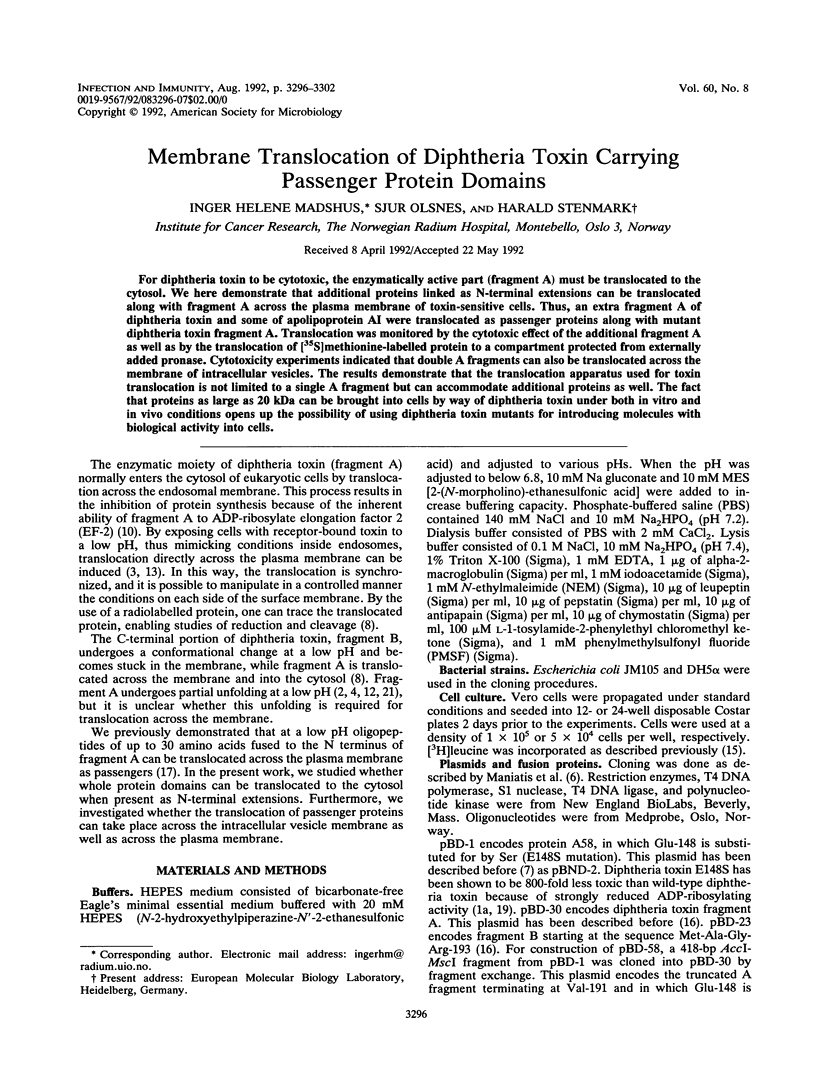
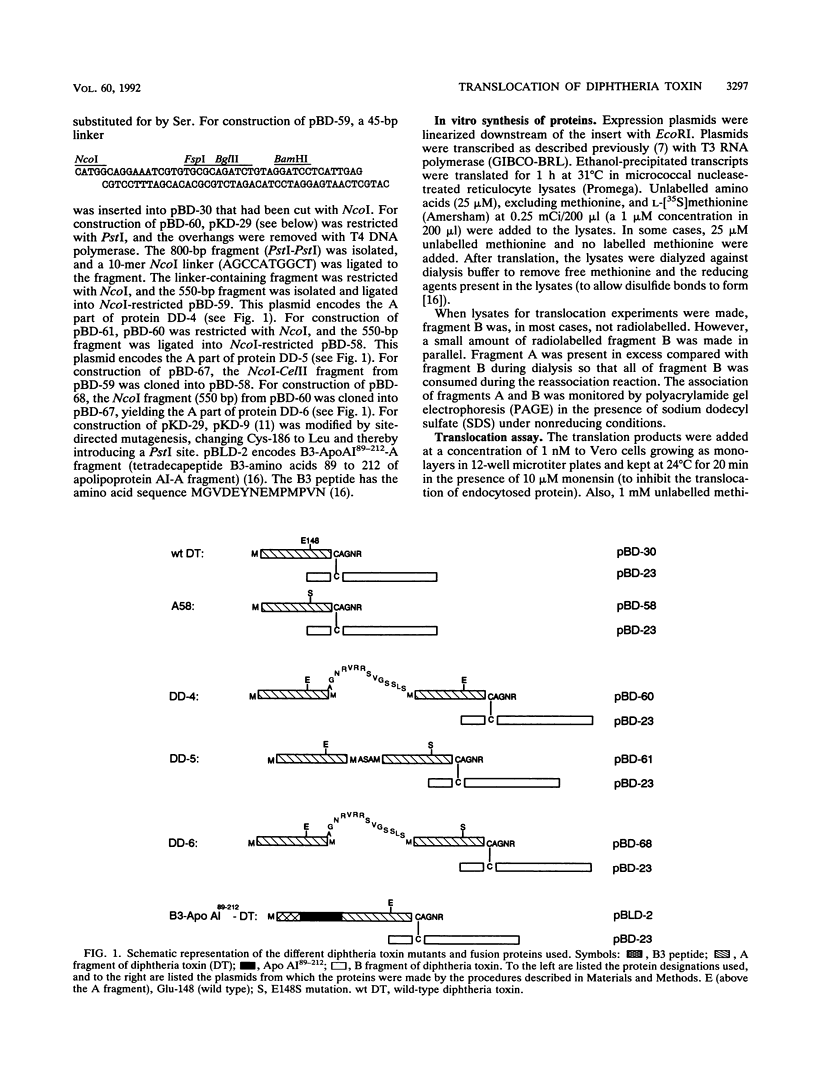
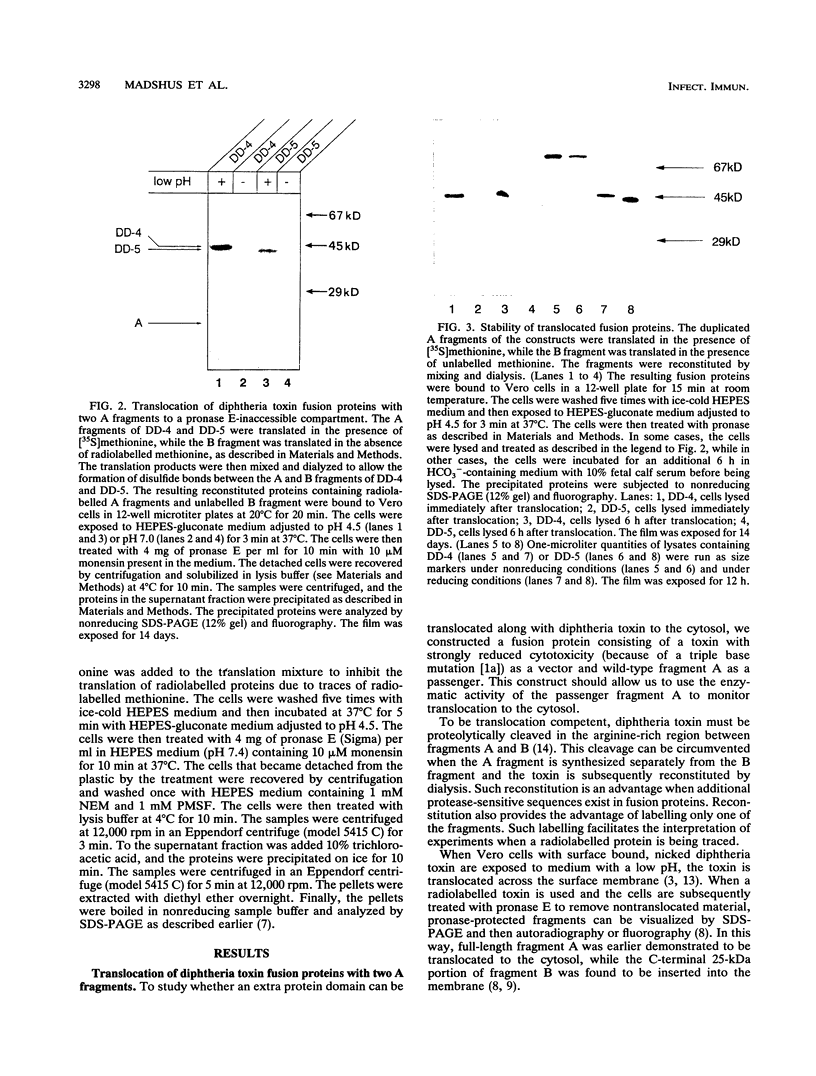
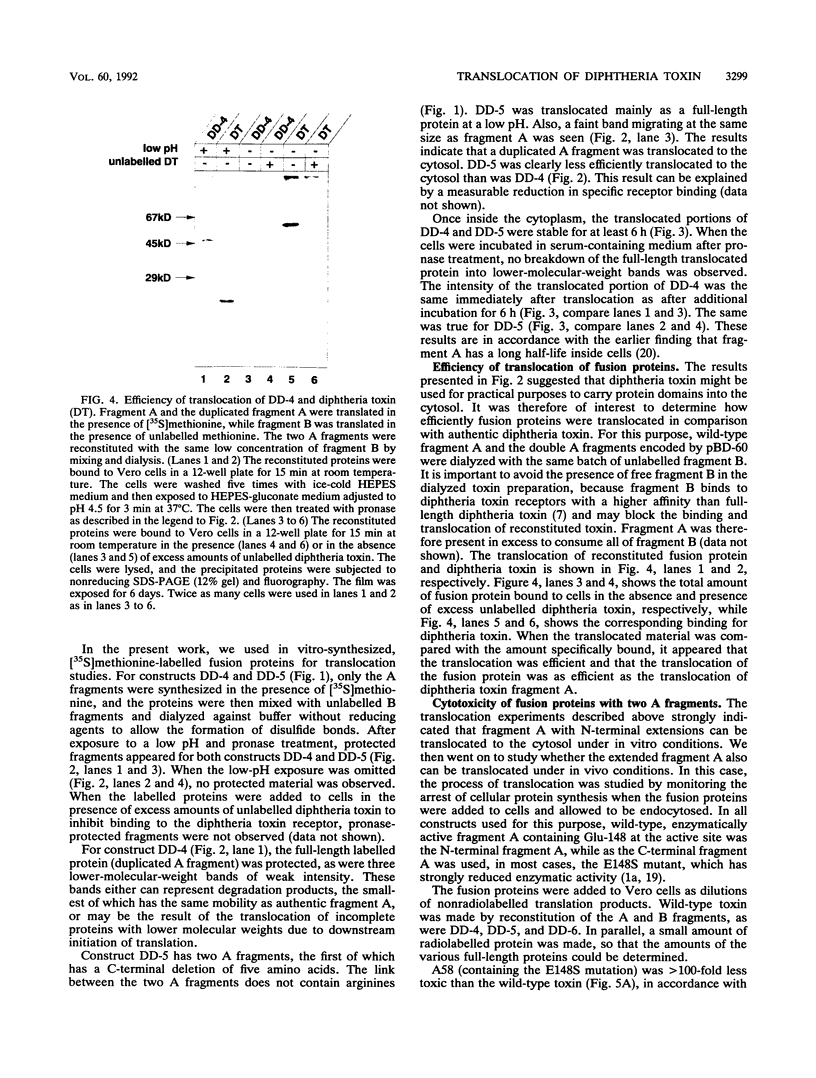
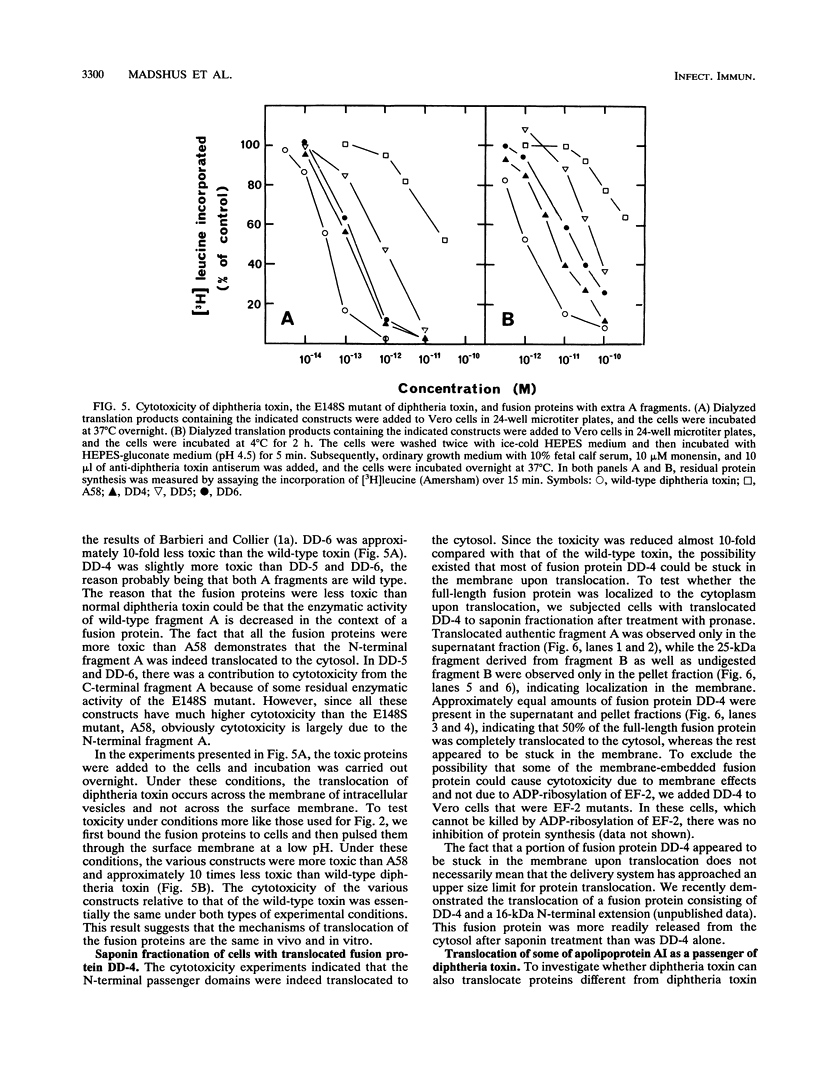
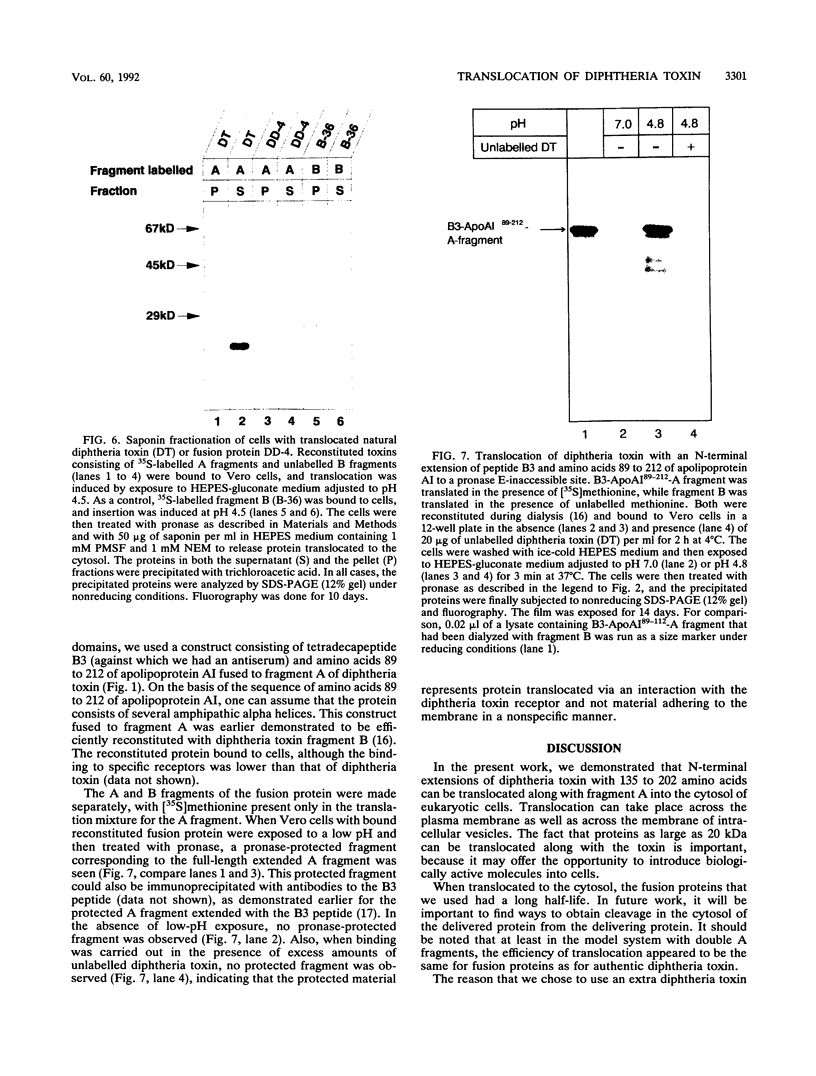
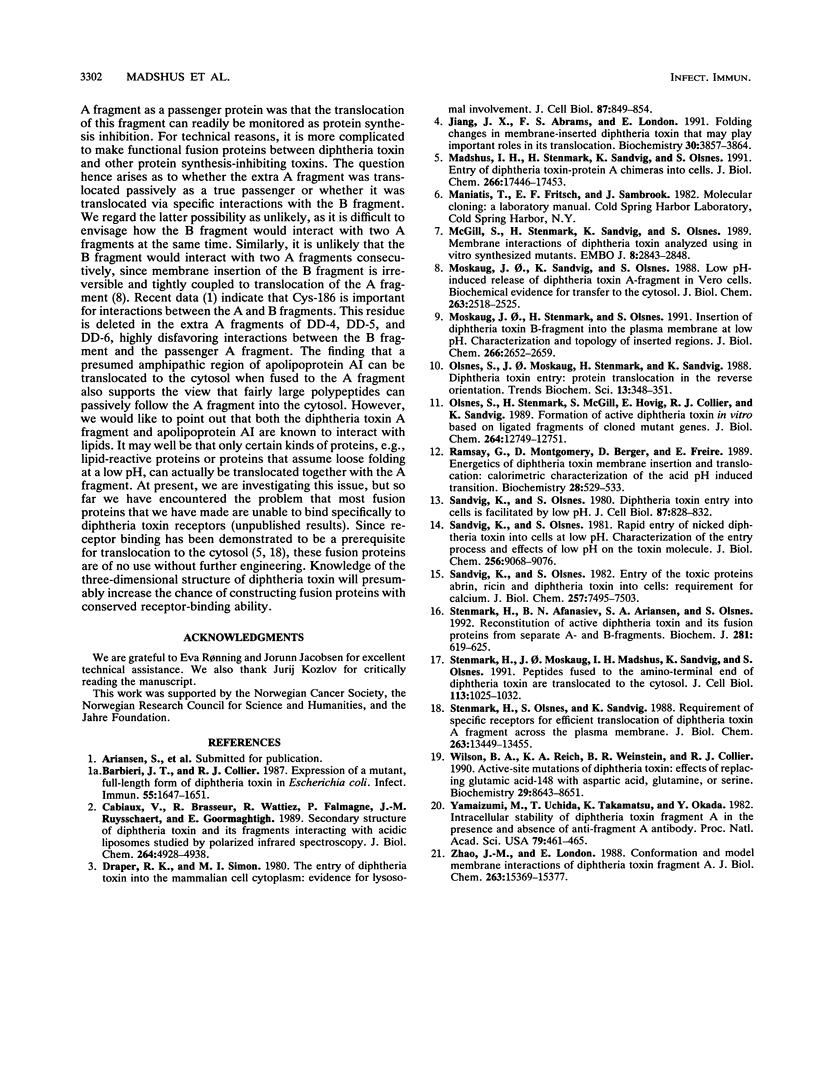
Images in this article
Selected References
These references are in PubMed. This may not be the complete list of references from this article.
- Barbieri J. T., Collier R. J. Expression of a mutant, full-length form of diphtheria toxin in Escherichia coli. Infect Immun. 1987 Jul;55(7):1647–1651. doi: 10.1128/iai.55.7.1647-1651.1987. [DOI] [PMC free article] [PubMed] [Google Scholar]
- Cabiaux V., Brasseur R., Wattiez R., Falmagne P., Ruysschaert J. M., Goormaghtigh E. Secondary structure of diphtheria toxin and its fragments interacting with acidic liposomes studied by polarized infrared spectroscopy. J Biol Chem. 1989 Mar 25;264(9):4928–4938. [PubMed] [Google Scholar]
- Draper R. K., Simon M. I. The entry of diphtheria toxin into the mammalian cell cytoplasm: evidence for lysosomal involvement. J Cell Biol. 1980 Dec;87(3 Pt 1):849–854. doi: 10.1083/jcb.87.3.849. [DOI] [PMC free article] [PubMed] [Google Scholar]
- Jiang J. X., Abrams F. S., London E. Folding changes in membrane-inserted diphtheria toxin that may play important roles in its translocation. Biochemistry. 1991 Apr 23;30(16):3857–3864. doi: 10.1021/bi00230a008. [DOI] [PubMed] [Google Scholar]
- Madshus I. H., Stenmark H., Sandvig K., Olsnes S. Entry of diphtheria toxin-protein A chimeras into cells. J Biol Chem. 1991 Sep 15;266(26):17446–17453. [PubMed] [Google Scholar]
- McGill S., Stenmark H., Sandvig K., Olsnes S. Membrane interactions of diphtheria toxin analyzed using in vitro synthesized mutants. EMBO J. 1989 Oct;8(10):2843–2848. doi: 10.1002/j.1460-2075.1989.tb08431.x. [DOI] [PMC free article] [PubMed] [Google Scholar]
- Moskaug J. O., Sandvig K., Olsnes S. Low pH-induced release of diphtheria toxin A-fragment in Vero cells. Biochemical evidence for transfer to the cytosol. J Biol Chem. 1988 Feb 15;263(5):2518–2525. [PubMed] [Google Scholar]
- Moskaug J. O., Stenmark H., Olsnes S. Insertion of diphtheria toxin B-fragment into the plasma membrane at low pH. Characterization and topology of inserted regions. J Biol Chem. 1991 Feb 5;266(4):2652–2659. [PubMed] [Google Scholar]
- Olsnes S., Moskaug J. O., Stenmark H., Sandvig K. Diphtheria toxin entry: protein translocation in the reverse direction. Trends Biochem Sci. 1988 Sep;13(9):348–351. doi: 10.1016/0968-0004(88)90105-3. [DOI] [PubMed] [Google Scholar]
- Olsnes S., Stenmark H., McGill S., Hovig E., Collier R. J., Sandvig K. Formation of active diphtheria toxin in vitro based on ligated fragments of cloned mutant genes. J Biol Chem. 1989 Aug 5;264(22):12747–12751. [PubMed] [Google Scholar]
- Ramsay G., Montgomery D., Berger D., Freire E. Energetics of diphtheria toxin membrane insertion and translocation: calorimetric characterization of the acid pH induced transition. Biochemistry. 1989 Jan 24;28(2):529–533. doi: 10.1021/bi00428a018. [DOI] [PubMed] [Google Scholar]
- Sandvig K., Olsnes S. Diphtheria toxin entry into cells is facilitated by low pH. J Cell Biol. 1980 Dec;87(3 Pt 1):828–832. doi: 10.1083/jcb.87.3.828. [DOI] [PMC free article] [PubMed] [Google Scholar]
- Sandvig K., Olsnes S. Entry of the toxic proteins abrin, modeccin, ricin, and diphtheria toxin into cells. I. Requirement for calcium. J Biol Chem. 1982 Jul 10;257(13):7495–7503. [PubMed] [Google Scholar]
- Sandvig K., Olsnes S. Rapid entry of nicked diphtheria toxin into cells at low pH. Characterization of the entry process and effects of low pH on the toxin molecule. J Biol Chem. 1981 Sep 10;256(17):9068–9076. [PubMed] [Google Scholar]
- Stenmark H., Afanasiev B. N., Ariansen S., Olsnes S. Association between diphtheria toxin A- and B-fragment and their fusion proteins. Biochem J. 1992 Feb 1;281(Pt 3):619–625. doi: 10.1042/bj2810619. [DOI] [PMC free article] [PubMed] [Google Scholar]
- Stenmark H., Moskaug J. O., Madshus I. H., Sandvig K., Olsnes S. Peptides fused to the amino-terminal end of diphtheria toxin are translocated to the cytosol. J Cell Biol. 1991 Jun;113(5):1025–1032. doi: 10.1083/jcb.113.5.1025. [DOI] [PMC free article] [PubMed] [Google Scholar]
- Stenmark H., Olsnes S., Sandvig K. Requirement of specific receptors for efficient translocation of diphtheria toxin A fragment across the plasma membrane. J Biol Chem. 1988 Sep 15;263(26):13449–13455. [PubMed] [Google Scholar]
- Wilson B. A., Reich K. A., Weinstein B. R., Collier R. J. Active-site mutations of diphtheria toxin: effects of replacing glutamic acid-148 with aspartic acid, glutamine, or serine. Biochemistry. 1990 Sep 18;29(37):8643–8651. doi: 10.1021/bi00489a021. [DOI] [PubMed] [Google Scholar]
- Yamaizumi M., Uchida T., Takamatsu K., Okada Y. Intracellular stability of diphtheria toxin fragment A in the presence and absence of anti-fragment A antibody. Proc Natl Acad Sci U S A. 1982 Jan;79(2):461–465. doi: 10.1073/pnas.79.2.461. [DOI] [PMC free article] [PubMed] [Google Scholar]
- Zhao J. M., London E. Conformation and model membrane interactions of diphtheria toxin fragment A. J Biol Chem. 1988 Oct 25;263(30):15369–15377. [PubMed] [Google Scholar]



